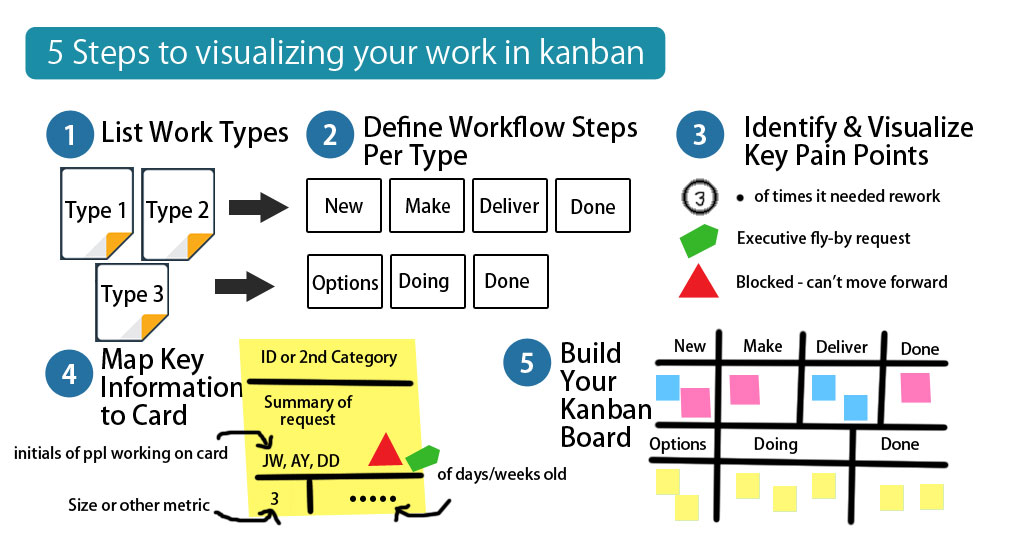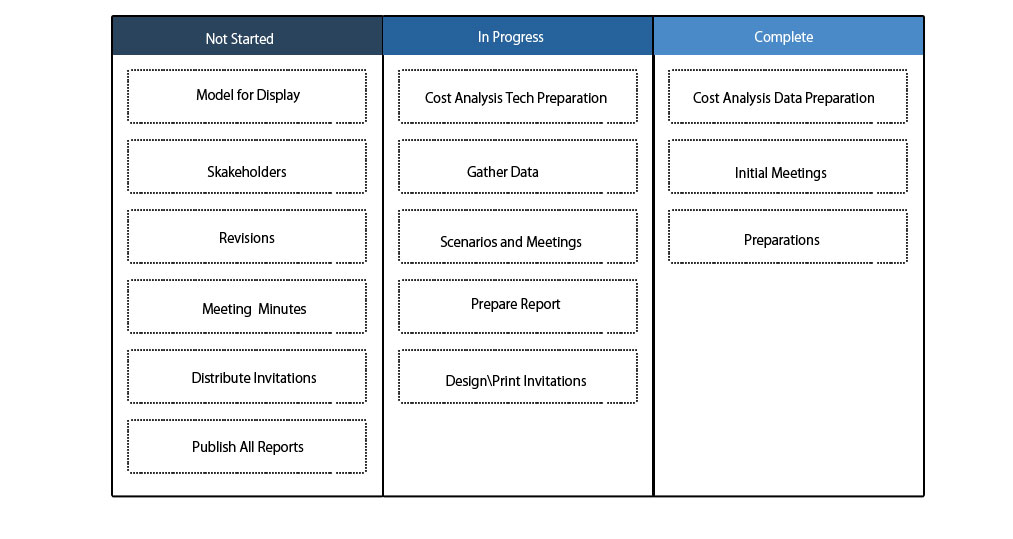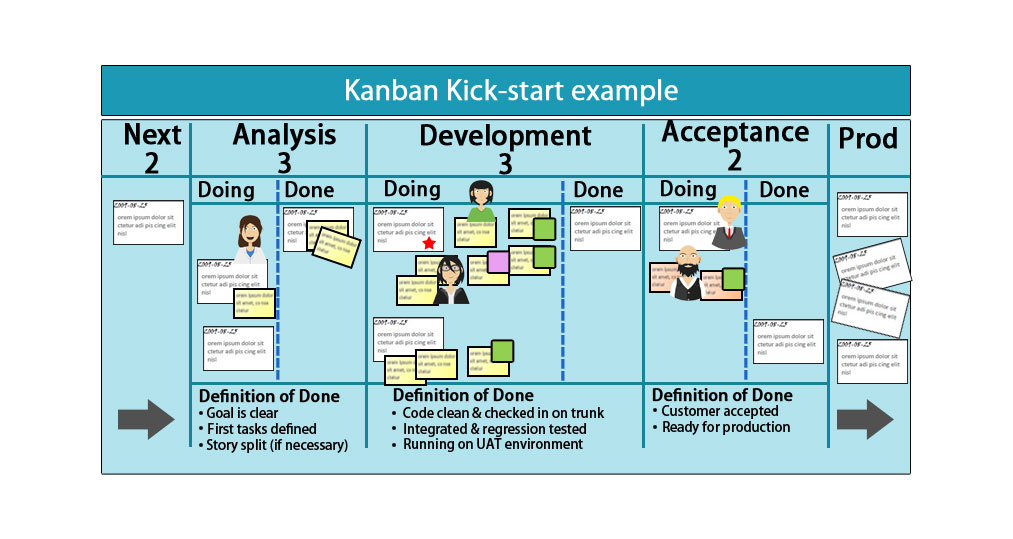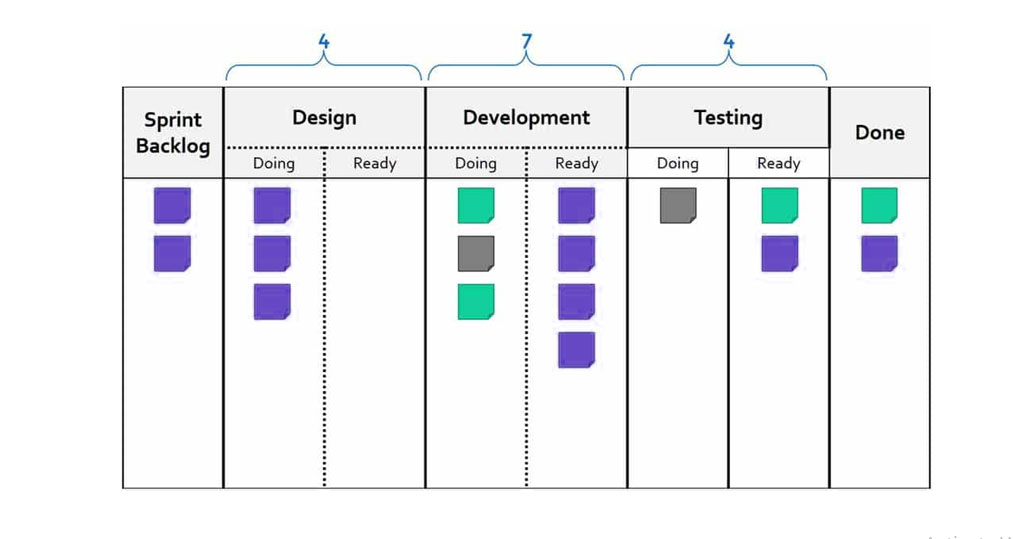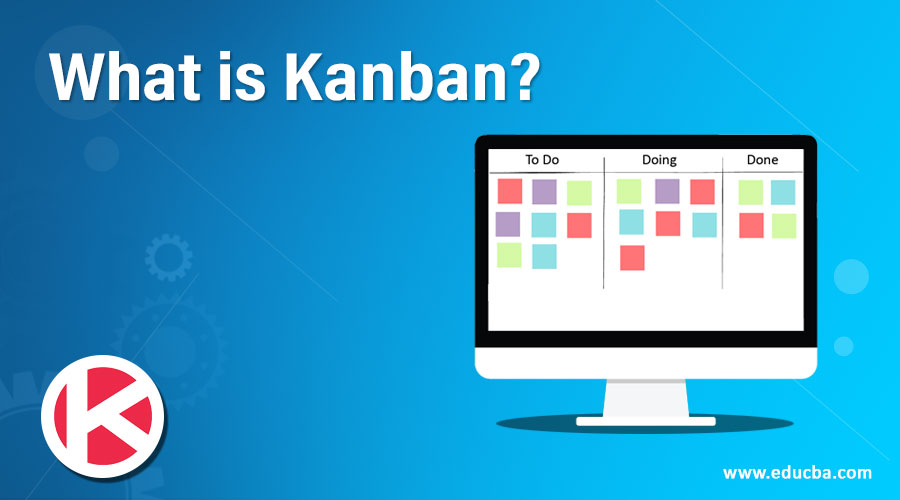
What is Kanban?
Kanban is one of the approaches for Agile Implementation, which was first used and developed by Taiichi Ohno. Taiichi Ohno was working as an Industrial Engineer at the Japanese company “Toyota”. It is an approach which uses a visual system for managing the work as it moves forward. While Taiichi Ohno developed it for the manufacturing work, it was not until 2004 when David J. Anderson used this method for the IT Software Development, and since then, it has become one of the most popular agile development approaches. Kanban Board in Agile is used to visualize the workflow.
Working with Kanban/Kanban Process
It comes with 4 basic set of principles which helps identify and fix the bottlenecks in the process and reduce any waste and efforts of time:
1. Visualize Work (Kanban Board)
It requires that any workflow must be outlined in such a way that it can be easily visualized. It becomes easy to identify the blockers, bottlenecks, finished work, current work progress, upcoming work, and many more things by adhering to this.
2. Limit Work in Progress
One of the main aspects of this is to keep moving the work efficiently from beginning till the closure with as little lag and waste as possible. There is a “work in progress” column in the Kanban workflow board where the team mutually defines the limit of the work. Then, the work is pulled from the previous column to the current column, i.e. “Work in progress”, only if the total count of the work under the current column is less than its defined limit. This helps in reducing any lags between upcoming works and ongoing work.
3. Focus on Flow
As we know, we have different phases as a part of the Software Development Life cycle, such as requirement gatherings, analysis, testing, development, review, maintenance, etc. Therefore, it becomes extremely important to look at the flow of the work that is undertaken. The above principles allow us to focus on the flow of the work. This flow enables the team to visualize any bottlenecks to address.
4. Continuous Improvement
When a Kanban approach is successfully implemented to a project, it keeps on looking for the scope of improvements to the delivered project. If it finds any, it modifies the product by including the improvement and then delivers it again. This could be a never-ending process which makes Kanban one of the best Agile approaches.
Kanban Board
A Kanban board could be a physical board or a display board that you can visualize through a computer screen. Kanban Board is a solution that helps you to organize the work list with the help of its Kanban Principles. A Kanban Board is having different columns such as to Do list, In Progress list, completed list, etc., which are fully governed by Kanban Principles, which have seen above. All the columns have the names of the tasks that are colored with different marks, and each color has a meaning.
Hence, a Kanban Board has the following three main sections:
- ToDo (Also called backlog)
- In Progress
- Completed/Done
Implementing Multiple WIP Columns for any Section
Usually, the in-progress section is divided into more than one column to accommodate all subsections or phases of works under the in-progress section. For example, “In Progress” can be split into different columns with names such as Analysis, Development, and testing to better accommodate each phase’s work.
Implementing WIP Limits and Splitting WIP Columns
As we have seen in “Kanban principles”, setting the limit for the “In Progress” column was one of its core principles. The work is pulled from the previous column to the current column, i.e. “Work in progress”, only if the total count of the work under the current column is less than its defined limit. For example, in the below figure, we have set the WIP limit as 3 for the “Doing” subcolumn of In Progress column. For example, if the number of work packets decreases below 3 and one work packet is moved to the ready state, one work packet will be pulled from the sprint backlogs, and again the Doing sub column will have a total of three work packets which is the defined WIP limit.
It is always recommended to split the WIP limit into two sub-columns as is shown:
- Doing
- Ready
For example, once the work packets in the design module are completed, it is now ready to be passed to the development section. This approach helps the teams to create better project strategies and enables clear visualization and a picture of the ongoing project.
Benefits
Following are some of the benefits given:
1. Versatility: This approach is extremely visible and an eye-opener for project teams. All the workflow inside the Kanban board communicates with through each other with the help of visible signals. Moreover, as it is universally accepted, it can be used and implemented by almost every team, which makes it a very versatile approach to use.
2. Continuous Improvement: When a Kanban approach is successfully implemented to a project, it keeps on looking for the scope of improvements to the delivered project. If it finds any, it modifies the product by including the improvement and then delivers it again.
3. Reduces Bottlenecks and Roadblocks: The In Progress column of Kanban helps the team visualise and detect bottlenecks and issues of the project, which helps them fix.
4. Continuous Delivery: It is known for its just in time delivery as it focuses on a continuous delivery approach by keeping on moving work packets from one stage to the other.
5. Visual Metrics: It allows easy transparency and continuous improvement of the project lifecycle with its elegant visual metrics.
6. Robust Team: This approach empowers the team to make a more agile decision as the entire team almost owns the Kanban system, and they make progress as the project moves forward.
Conclusion
In this article, we started with a brief introduction and history of Kanban, which was followed by the core principles that make any Kanban model a purely agile and successful one. We then saw a couple of Kanban implementation approaches, and we learned about the benefits of using a Kanban system.
Recommended Articles
This has been a guide to What is Kanban? Here we discussed the basic concept, kanban board, working, along with some benefits respectively. You can also go through our other suggested articles to learn more –
